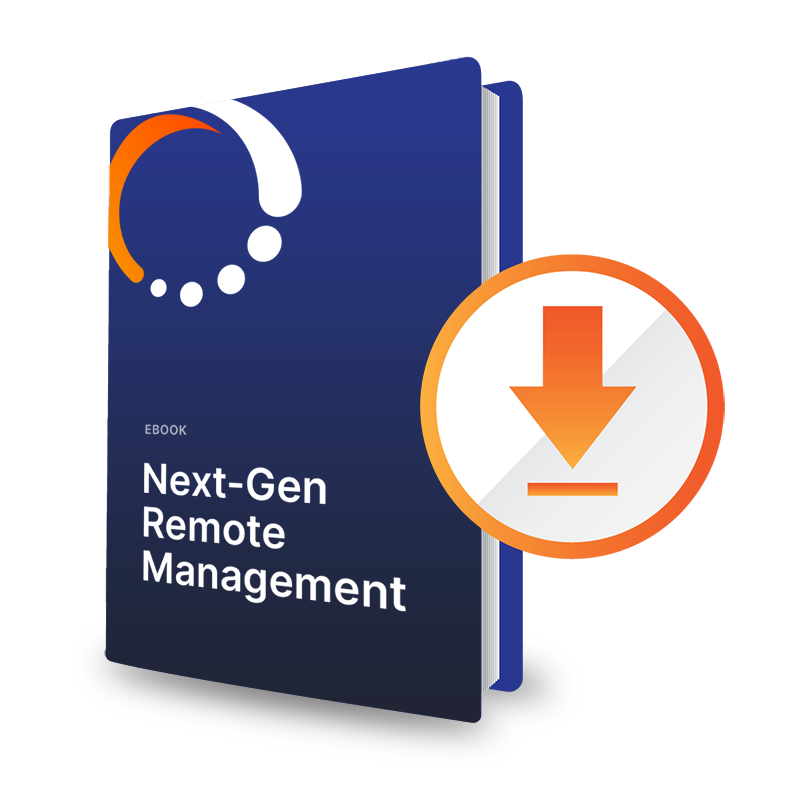5 Steps to Implementing Remote Monitoring and Management
Through RMM unlock asset tracking, condition monitoring, indoor positioning, alerts, and data-driven decision-making.

While the Internet of Things has numerous applications to improve processes, save money, and increase efficiency, all other “use cases” seemingly pale these days when compared to the need to improve our public welfare and safety.
Indeed, the IoT and its network of smart and connected devices is seemingly custom-made to help government agencies and businesses step up their responses to emergencies and disasters.
That said, many business owners and operators are still unsure of exact steps and best practices for implementing remote monitoring and management. The good news is that it’s not as daunting as you might think.
Much of the necessary hardware is relatively cheap and the software is mature and flexible to suite many needs. If you’re thinking about ways to get started, here are some of the processes we recommend putting in place:
1. Track the movement of critical assets
It’s now easier than ever to know where your assets are currently located and, if they need to go somewhere, track when they’ll arrive at their destination. GPS trackers, for example, can be affixed to goods and materials so you can track items of interest at every stage of the supply chain.
2. Track the condition of critical assets
IoT sensors can also monitor the condition of goods and materials. If you care about factors like temperature, humidity, vibrations, or impact, there’s a way to keep tabs on those details on a virtually real-time basis. That means you have an audit trail of the temperature of perishable foodstuffs or other goods that need to stay refrigerated, for example, and fragile or sensitive products that need to be isolated from drops, shocks, vibrations, and impacts can be tracked and monitored to ensure they are not damaged in transit. And if they are damaged, you know immediately and can train software to take action when it observes something go wrong.
3. Use indoor positioning to monitor critical spaces
f you need to monitor a location from afar, you can use indoor positioning. This technology can help you track people as they enter, walk around and exit the space. Indeed, beacon technology has been in use for years to better monitor customers in retail settings. There are active beacons that can track the comings and goings of visitors and there’s more passive tech like wi-fi that can geo-locate people and monitor their movement within a specific location such as a warehouse.
4. Set up alerts to monitor changes
No human being needs to be sitting in front of a screen monitoring operations or looking for the exact location of an asset. Tracking software and analytics applications can send notifications and automatically trigger other applications to take action when an event happens. Amazon, for example – which is arguably the world’ s largest retail operation – has deployed Wi-Fi connected robots that identity products in its enormous warehouses via QR codes when shipments need to be processed.
5. Use data to make decisions
Putting the above technology in place will produce reams of data that’s incredibly valuable. It can tell you where waste is occurring, what equipment might be failing and even how much power is being consumed by a machine. The data captured by devices, and then reduced and processed into rich analytics helps managers and leaders at every level drive the types of decisions and improvements that the IoT promises in the first place.
Again, keep in mind that the tech needed to enable a remote monitoring and management is by no means the stuff of science fiction. It’s already built into established, off-the-shelf hardware like GPS trackers, RFID tags and location beacons.
In addition, it’s already possible to transmit data from a network of connected devices where it can be processed, analyzed, and reported, and it will only get faster, cheaper, and more efficient as 5G cellular networks proliferate across the U.S.
The bottom line is that the IoT has the potential to dramatically improve the visibility that IT managers have into their operations, which will save money, increase efficiency and expand our ability to operate businesses from remote locations. That would be a timely win for all of us.













